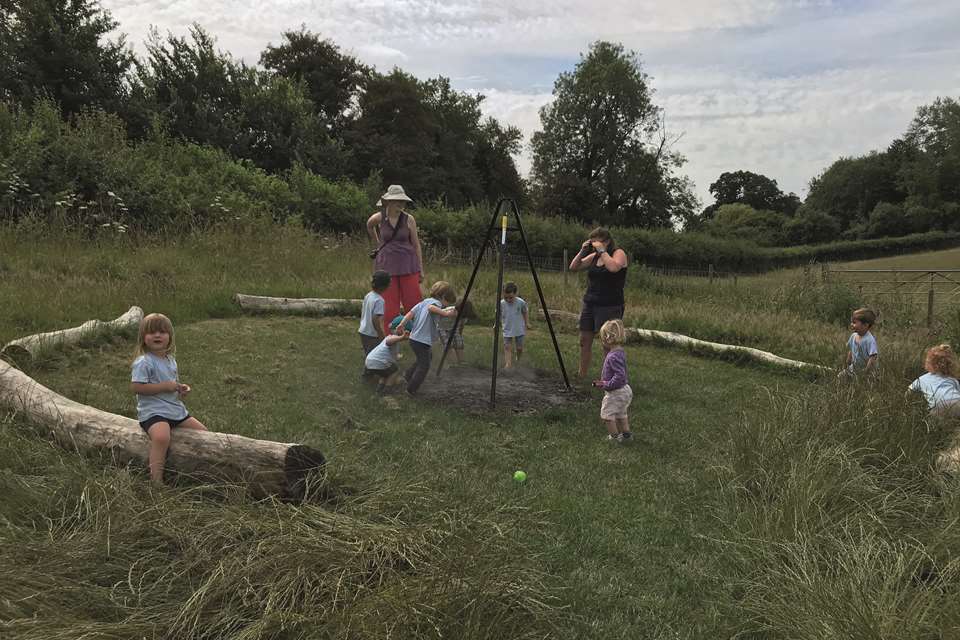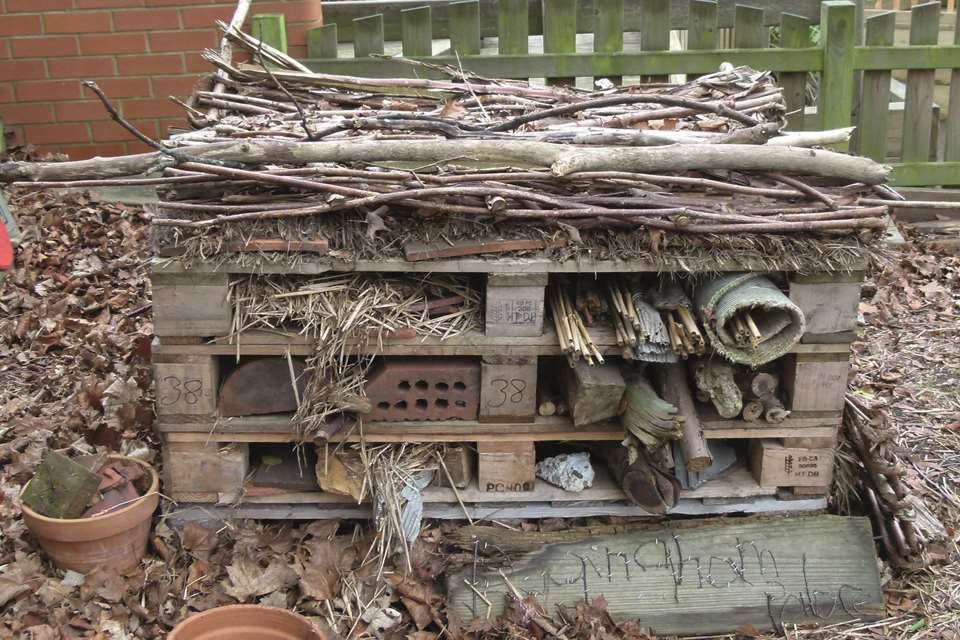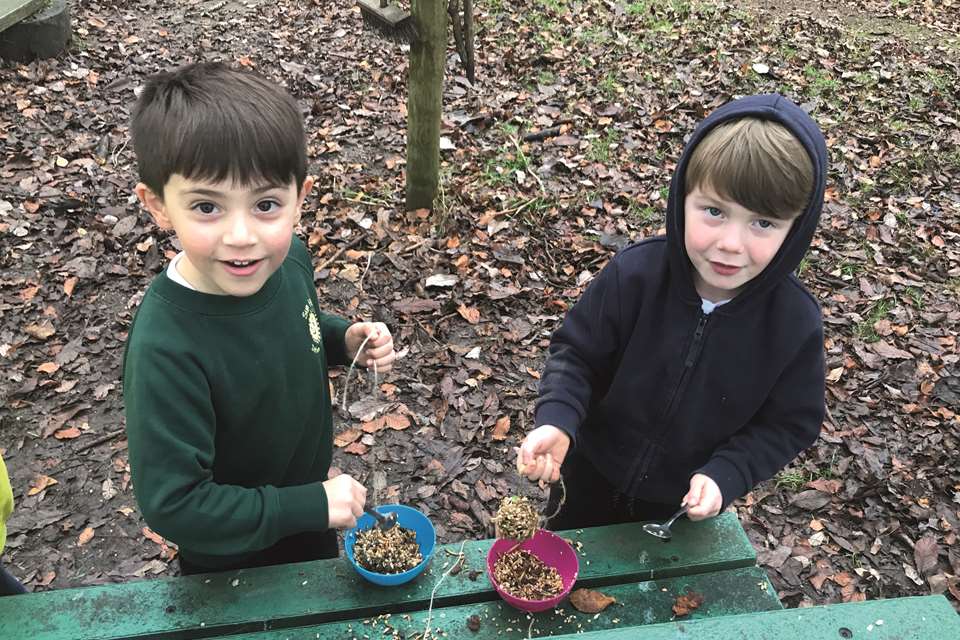Your outdoor calendar: June
By Julie Mountain
Tuesday, June 1, 2021
Activities and tasks to help get your children outside this month. By Julie Mountain

ACTIVITY
LET’S GET PHYSICAL

Children should be physically active for at least three hours each day – and of course outdoors is the perfect place for this to happen. The British Heart Foundation has an excellent booklet outlining approaches for non-walking and walking children – search online for ‘BHF Early Movers 0-5’ and the PDF should come up as the first result.
Parkour, sometimes known as urban gymnastics, is a gloriously physical activity.
- It raises heart rates, gets blood and oxygen pumping around the body, requires quick thinking and rapid reflexes. Even the very youngest children can participate within their physical capabilities and Parkour will help them build physical and emotional resilience. It makes use of fixed features and equipment for challenge.
- Start a Parkour session with a warm-up, modelling stretches, bends, twirls and arm swings to get the blood flowing. A piece of music with a strong rhythmic beat can help children keep up a decent pace as they move around the garden.
- Point out interesting objects and obstacles that children can interact with. For some children you’ll want to suggest ways of moving over, under or around it, and for others you’ll know they will create their own movements.
- Parkour is quite a balletic sport – at least when practised by experts – and you should encourage children to ‘flow’ between each obstacle, using the whole of their body to occupy the space available. Stretch high then curl up and roll, leap and cartwheel.
- Allow children to use the features in the garden in new, risk-embracing ways – for example, running along benches or low walls and jumping off the end, bounding down two or three steps at a time, hanging from their arms under a piece of play equipment. Make bridges from planks and hollow blocks, tie ropes to branches to swoop through the air…
Early childhood movement specialist Jasmine Pasch advocates ‘Boing Whoosh RolyPoly!’ to promote and help train young children's vestibular system. Boing is movement in the vertical plane (up and down), Whoosh is movement in the horizontal plane (to and fro) and RolyPoly is rotational movement such as twirling. Incorporating Boing Whoosh RolyPoly into outdoor play every day can have a significant impact on children's physical skills as well as their general fitness.
NATURE WATCH
LOOK OUT FOR…

Fledglings: Baby birds will have been cuddled up with their parents and siblings through spring – now the weather warms up, parents will be encouraging their young to fledge. Fledglings can be identified by their rather scruffy plumage (all that worm energy has gone into growing, not feathers) and shorter tail. If you’re lucky enough to have nesting birds in your garden, keep watch for the first flight. Babies will be flapping their wings in the nest, practising for the real thing and squawking loudly. Sadly, there may be casualties. If so, take the opportunity to let the children examine the baby bird up close and talk about what's happened to it.
Conkers: Yes, really! After May's magnificent horse chestnut blossom has dropped, tiny conker cases can be spotted growing in their place. The cycle of growth is worth exploring, so if possible, cut a few small specimens from the tree each month from now until autumn to record how the conker itself grows. The cases are very hard at this point in their growth, so a sharp knife will be needed to open them up.
MAINTENANCE

IT'S TIME TO…
- Ensure bird baths are kept topped up in hot weather. Birds – especially fledglings – will be grateful for easy sources of hydration.
- Sow late summer and autumn flower seeds, such as the poached egg plant and nasturtiums, both of which will bring a bright pop of colour to the garden as other species are fading and will self-seed, providing more colour each year. Sow liberally in small seed trays and plant out once they are big enough for children to handle.
- Prune back and thin out spring-flowering shrubs to encourage strong growth.
STORY TO SHARE

The Pied Piper of Hamlyn is a traditional tale with many versions available. I love the illustrations, by Emma Chichester Clark, in the Michael Morpurgo version of this tale, but the text is more suited to slightly older children.
The Pied Piper is the perfect story for children to act out in the garden, promoting vigorous and joyful physical activity. Provide cloaks for the Pied Pipers (colourful sheets will do!) and if no ‘pipes’ are available, a stick will work just as well, played sideways like a flute rather than a recorder. Turn parts of the garden into Hamlyn locations, such as the town square, the woods, the mountain – different versions of the tale have different locations so you can choose your own to fit your retelling.
A NEW PROJECT
ROPE SWING

Every child should experience the exhilaration of swooshing through the air on a swing suspended from a tree, yet in recent years they have become less and less conspicuous. Fears over their safety have prevented schools and settings from making the most of the mature trees in their grounds, and yet tree swings can be as safe as any expensively purchased piece of play equipment.
- London Play and Monkey-Do collaborated on an excellent guide to tree swings, and I strongly recommend you download a copy. It's easy to understand and very practical. Find it here: www.tinyurl.com/LPTreeSwing
- The key messages in this guidance are:
- Choose the right tree: some are far stronger than others. Look for cracks or recent movement around the root zone, and for dead branches or decay at the end of long, thick limbs.
- Choose the right terrain: grass, bare earth and wood chips are fine and there is no need for artificial surfaces below tree swings.
- Choose the right anchor point: around halfway along a thick, strong branch. Too close to the trunk and children could collide with it; too far from the trunk and the branch's integrity begins to reduce.
- Protect the bark on the branch by wrapping fabric or a towel around it before the rope goes up – repeated friction from the rope can damage the branch. A loop of webbing around the branch can also help distribute the force. If possible, move the swing to different places.
- Choose the right rope: ideally a ‘static’ rope which won’t stretch. I have access to old climbing ropes (thanks, dad!) so I use them, and they do have elasticity. It just means I have to allow for that when choosing the seat height – it needs to be higher than with a static rope, to allow for the stretch when a child sits on it.
- I make my swing seats from planks of wood or thick branches. The way the rope is attached matters – a seat with a rope connection at each end is easier to use than one with just one central attachment, but I like to have both available, for the physical challenge required to mount and dismount the latter type. You could also use a tyre or buy a ‘nest’ seat to allow several children to swing together.
- Monkey-Do recommends a ‘round turn and two half hitches’ knot for the rope at the anchor point and at the seat, and so do I! There are many illustrated and easy-to-follow guides to this knot, online, and it's hard to get it wrong.
- Test: you first, then the children! If the swing can cope with adult weight, it will cope with a child's weight. Remember that swinging introduces lateral forces, so don't just sit on the swing to test it, swing on it!
If you don't have a suitable tree, examine your equipment and other fixed features to see if one could be installed there – for example, under a climbing structure or pergola, or from a canopy. The London Play guidance includes a checklist for risk-benefit assessment, but most crucially, you should check the integrity of the branch every day and examine the knots for sturdiness and the surface under the swing for hazards.
RESOURCES
BEG, BUY OR BORROW…
Sunhats – being dressed for all weathers means also being ready for summer sun. Ask parents to donate sun hats, which you can keep in a basket by the door. It is good practice for children to get into a routine of slapping on a sun hat each time they go outdoors.
Mini-containers – in next month's calendar, I’ll be showcasing ideas about micro-collections, and you’ll need an abundance of tiny containers. Try to collect (for example): TicTac boxes, Kinder egg toy containers, single-portion jam jars, 35mm film canisters, cake sprinkle tubes, miniature Tupperware, contact lens containers, travel sweetie tins…
LOOKING AHEAD
MAKE PLANS FOR…
- 15 July is St Swithun's Day. Traditionally, if it rains on St Swithun's Day, it will rain for a further 40 days and 40 nights – explore weather myths, legends and stories and make a chart recording the weather each day from the 15th.
- The delayed summer Olympics begin in Tokyo on 23 July. Assuming they go ahead, it's a timely opportunity to incorporate even more physical activity into outdoor play. Invent your own ‘Olympic’ events (your Parkour will have generated some), try your hand at real ones, and introduce children to some Ancient Greek delicacies with picnics of crusty bread, olives and olive oil, figs and grapes.
RISK ASSESSMENT
WATCH OUT FOR…
Insects: Insects are inevitable outdoors in the summer, and in most cases, they are welcome visitors to the early years garden. The most obvious risk is from stings and bites – but there is also a risk to insects. If you have log or rock habitats in the garden, children will be tempted to keep looking so it might be worth temporarily restricting access to give tiny creatures some respite from having their ‘home’ dropped on their head too frequently!
Clearing up: Older children should now be taking more responsibility for helping adults clear up at the end of outdoor play and it's a fantastic way of squeezing a bit more physicality into their day. However, they should be subject to the same health and safety procedures as adults to minimise risk of injury. Talk to the children about how they can keep themselves and their friends safe while they help you clear up. For example, being aware of slips and trips, not carrying objects that are too heavy, collaborating, wearing gloves if necessary and stacking objects carefully.
‘OUR GARDEN IN 2021’
FOR THE RECORD…
Keep adding to your floorbook… why not create a page all about how children are bodyful and mindful in the garden? Record the places and spaces children are using to be active – particularly as they practise their Parkour moves. If you planted sunflower seeds earlier in the spring, you should have some decent specimens. Remember to keep recording their height each week as it won’t be long before the sunflowers are taller than the children!
Download Now








